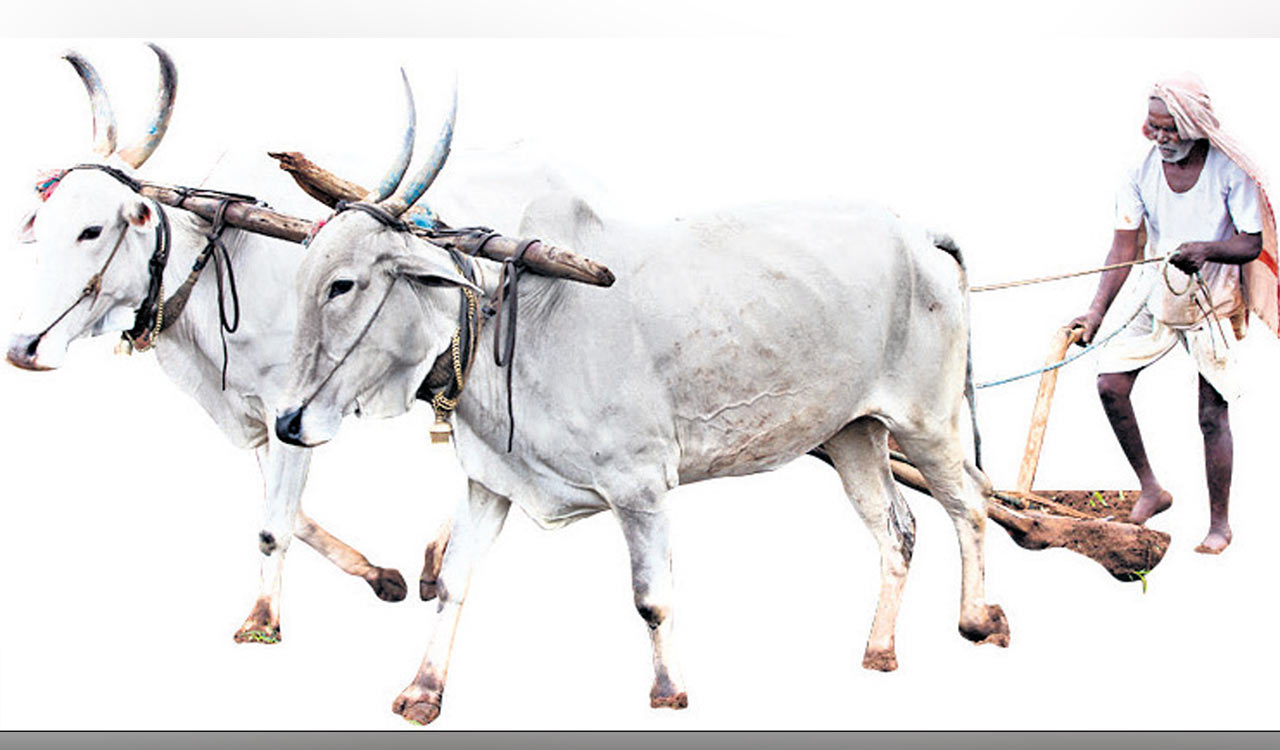
Despite huge requirements, the allocation for the sector has only increased 0.65% to Rs 1.275 lakh crore in Budget 2024-25
Published Date - 1 February 2024, 11:30 PM
By Dr Kedar Vishnu
Given that the growth in the agriculture sector is expected to slow to 1.8% in 2023-24 from 4% a year ago, economists hoped that the Finance Minister would considerably increase funding for the sector in the Union Budget 2024-25. Even though it is an interim Budget, Finance Minister Nirmala Sitharaman has made an extraordinary attempt to increase capital expenditure’s share in the total Budget from 21.16% in 2023-24 (Revised Estimate) to 23.31% in the 2024-25 Budget.
A major emphasis has been given to reducing poverty, women’s empowerment and inclusive economic growth. However, at the same time, the Budget allocation for the agriculture sector has only increased from Rs 1.267 lakh crore to Rs 1.275 lakh crore, an increase of 0.65% compared with the last Budget.
Within the agricultural sector, only 1% share is allocated towards capital expenditure. This percentage has remained the same for the last three years. Further, the agricultural sector accounted for only 3.36% of the total Budget share in 2022-23; it drastically declined to 2.82% in the last Union Budget, and now again, it fell to 2.67% in 2024-25 (Budget at a Glance 2023-2024). When the agriculture sector is experiencing its worst crisis, how will the Budget 2024-25 benefit it? Is there any change in the government’s strategy to change the allocation of funds for any scheme? How will the government bring the agricultural sector back on the growth track?
Priority of Government
In the Budget 2024-25, the government has given more attention to promoting the electronic national agriculture market (e-NAM), creating additional employment (through PM Kisan and MGNERGS), and credit supply from formal sources (through the Modified Interest Subvention Scheme [MISS]) and reduction in post-harvest losses. The allocation of funds for the above scheme is in a good direction for improving the income and financial support to farmers but to a small extent.
Market-Driven Reform
After withdrawing the three farm laws in 2021, the government has emphasised promoting e-NAM in the 2024-25 Budget by extending the online trading platform to other regulated Agricultural Produce Market Committees (APMC) markets. Around 1,361 regulated mandis in 23 States and four Union Territories were linked with e-NAM in 2023. The electronic market helps farmers overcome the asymmetric information problem while selling their fruits and vegetables. However, the government did not significantly attempt to improve the current mechanism for identifying the quality of fruits and vegetables in the Budget. The PM-Kisan scheme would also help farmers get income support of Rs 6,000 per year. The MISS would help farmers get short-term crop loans up to Rs 3 lakh at a benchmark rate of 9%.
Change in Allocation
Our analysis shows that the government still needs to increase the Budget allocation to a large extent for most agricultural schemes when farmers face considerable problems in raising input costs and are not getting the remunerated prices for their products. Among all the schemes, MGNERGS accounted for the highest allocation of Rs 86,000 crore in the Budget, followed by the PM Kisan scheme with Rs 60,000 crore. Interestingly, the allocation has seen a meagre increase of 1% in the present Budget compared with last year.
There is a significant increase for the MISS allocation with Rs 22,600 crore (22.2% increase as compared with the previous year), followed by Rashtriya Krishi Vikas Yojna (RKVY) with Rs 7,553 crore (22.8% increase), Krishonnati Yojana with Rs 7,447 crore (16.8% increase) and FPO (Farmers Producer Organisations) with Rs 582 crore (29.3% increase). The increase in funding for the above scheme will marginally help farmers increase their income and employment.
Among all the schemes, the Crop Insurance Scheme has seen the most significant decline. It has been allocated only Rs 14,600 crore (a reduction of 2.7% as compared with the 2023-24 Budget), followed by PM Annadata Aay Sanrakshan Yojna (a 21.7% reduction). The decline in funding for the above scheme would adversely affect farmers, who face some production-related and marketing-related constraints. We might have considerable fluctuations in the market prices for some of the oilseeds and copra.
What is Missing
Overall, the most important sector — which employs over 60% of the workforce — has been entirely disregarded by the Union Budget 2024–25 by just allocating 2.67% of the total Budget. The present government should have prioritised schemes that help farmers double their income, and more emphasis should have been given to increasing agricultural productivity. Reducing the agriculture Budget will not help create an efficient market, double farmers’ income, reduce the pre and post-losses, or, more importantly, connect small and marginal farmers to the global markets. The government should have given more importance to increasing agricultural exports and product quality with the help of private players.
To boost productivity and product quality, the government should have given greater priority to funding initiatives that encourage the use of artificial intelligence (AI) and geographic information systems (GIS). The above analysis shows that the agricultural sector has been fully neglected in the Union Budget 2024-25.





Leave a Reply